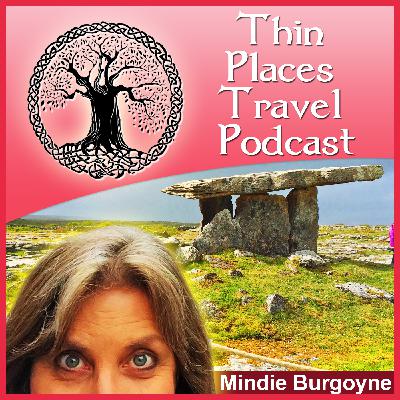004 Burial Grounds, Death and the Ancients
Description
Segment 1- Mindie – BURIAL GROUNDS – DEATH AND THE ANCIENTS
Death is the ultimate connection to the landscape.
Experiencing of Death and birth. Both are beginnings and ends of life cycles
It seems the ancient people of Western Europe may have articulated this concept in their passage tombs. Sometimes they resemble a womb … with the earth as the mother.
Thin places are places where we mark beginning and ends. These are sacred times. Fitting to be remembered and memorialized in sacred spaces.
In this next segment, Archaeologist Michael Moylan takes us to a burial ground in Connemara long forgotten. He uncovers a few graves and talks a little about the burial process in that region.
SEGMENT 2 - GUEST INTERVIEW
Michael Moylan is an archaeologist and tour operator from County Galway who invited me today to visit him on a small exploration of some graves that seem to be washing away at a place called Storm Beach. It is located just behind the Connemara Regional Airport I County Galway. Michael has unearthed some graves and discussed their age and some other specifics as well as some wonderful destinations to visit in Ireland.
Michael Gibbons Archaeology Travel
Connemara Aiport (view of Storm Beach from the air -
NOTE: Michael Moylan did alert the people of the community around Storm Beach to come consider taking care of these gravesites that were washing away, distributing bones along the beaches.
SEGMENT 3 - SITE REVIEW Omey IsLand
Omey Island – off the western edge of Connemara in County Galway. Accessible at low tide only. You can walk or drive across the strand onto the island. Tides are high so be aware that at certain times of the year, the tide can come in quickly and be high enough to cover a vehicle.
SIGHT AND PERCEPTIONS – the island is very old.
-
According to the Irish Central Statistics Office, there is no one left living full time on the island anymore.
-
The weather is dramatic – especially the wind
-
There were people living on Omey Island thousands of years ago. It was also believed to be the last holdout of paganism in Ireland.
-
St. Feichin was seventh century saint who founded a monastic settlement on Omey Island. He later went on to found several other settlements including Fore Abbey in co. Meath which is what he’s most famous for. But he started here on Omey. Nothing is left of his original settlement on Omey, but it continued to foster a Christian community well into the Medieval times, and there are ruins from that community.
-
There’s a large bowl-shaped out impression on a hillside in Omey Island, and in the center of it are the ruins of a Medieval church. This is likely where St. Feichin had his monastery and the ruins are of a later church. The church ruins and remnants of the community were buried in the sand – the wind is very strong. The hole or depression that you now see the church ruin sitting in shows how it was excavated in 1981 after being buried in the sand. Surrounding the area is a semi sunken village – foundations from stone huts, occupied by islanders were also discovered. The village was wiped out during the Famine. The wind literally blew the sand over the little village and the church.
-
I took a tour of Omey Island with the archaeologist, Michael Mullen who works with Michael Moylan. I asked him about the famine and how it hit Omey. I asked if there was a massive evacuation and he






